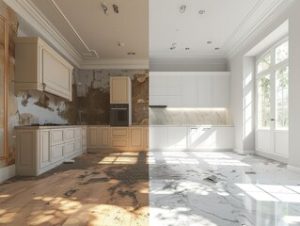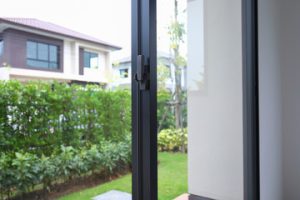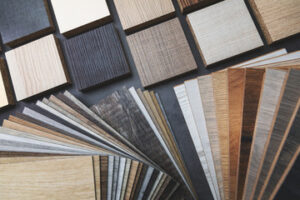The kitchen is one of the most used rooms in your home. Kitchen Remodeling San Jose is a great way to upgrade the space while adding value to your property.

A well-designed kitchen is a key selling point for potential homebuyers. A professional can help you design a kitchen that suits your lifestyle while optimizing functionality and energy efficiency.
The aesthetic of your kitchen is key to making the space a happy go-to place for family and friends. You want the room to feel welcoming and appealing to everyone who enters, which means pleasant finishes and colors that reflect your unique style. A kitchen remodel is the perfect opportunity to try out design trends, explore cabinetry and countertop materials, and choose the best lighting to create a stunning and memorable kitchen.
While finding a design style and determining a layout are important, you must also consider your family’s lifestyle and daily habits when choosing materials and finishes for your new kitchen. For example, if you have young children who often help out in the kitchen, durable materials that can withstand wear and tear are a must-have. In addition, if you entertain guests frequently, statement lighting fixtures that add ambiance and personality can elevate your design.
Functionality in a kitchen is closely linked to efficiency, which can have a significant impact on how much time you spend preparing meals and enjoying them with your loved ones. Kitchen remodeling is the ideal opportunity to optimize your kitchen for workflow and flow by reconfiguring the placement of appliances, workstations, and storage areas. A well-designed layout can streamline tasks, minimize potential hazards, and make it easier to reach commonly used items.
Kitchen remodels should always be planned for the long-term, so that they will remain aesthetically pleasing and meet your family’s needs over the years to come. If you are planning on selling your home in the future, a modernized kitchen can make it more attractive to prospective buyers and increase your property value. Upgrades like a new backsplash, updated appliances, and sleek LED strip lighting can instantly elevate your kitchen’s look. These upgrades are often more affordable than major structural changes and can be completed in less time as well.
Functionality
The kitchen is a complex space in which every design element influences each other. For example, the placement of appliances affects the storage needs of adjacent cabinetry and the flow of traffic in the room. Kitchen remodelers consider all of these factors to create a more efficient, user-friendly layout that maximizes functionality and streamlines cooking activities.
When designing a kitchen, the first step is to identify your goals and priorities. Then, you can begin to define the aesthetics that speak to you and capture your personal style. This is a crucial step because your personal style and preferences will influence the end result of the remodel. Your design team will use this information to develop several concept designs that showcase different layout and aesthetic options for your kitchen. This is an opportunity to offer feedback and refine the concepts until you are happy with the results.
Kitchen remodeling is a great way to improve the function of your home, and it can also increase its value. The kitchen is one of the most important rooms in the house, and prospective buyers often prioritize modernized kitchens when looking at homes for sale. Additionally, kitchen upgrades are one of the quickest and easiest ways to add value to your home.
It’s also worth noting that there is a difference between kitchen remodeling and renovation. While both services can make your kitchen more attractive, remodeling is a more extensive service that involves significant changes to the structure and layout of the space. Kitchen renovation, on the other hand, focuses more on upgrading existing elements and making minor adjustments to the décor.
Both types of services have their benefits, but it’s important to understand the differences between them before deciding which option is right for you. If you’re unsure which option is best, you can always consult with an experienced kitchen remodeling professional to get some guidance.
Remodeling is a big project that can be overwhelming for homeowners. They have to think about the overall design and layout of their kitchen, make decisions on materials and fixtures, live through weeks of construction, and more. However, hiring a kitchen remodeling expert can make the entire process much less stressful and ensure that your new kitchen will meet all of your functional and aesthetic needs.
Energy Efficiency
The kitchen is one of the most energy-consuming areas in your home, with electricity for cooking and refrigeration and water used for washing dishes and cleaning. By focusing on energy-efficient improvements during your renovation, you can reduce your environmental impact and save on utility bills.
When planning your green remodel, start by identifying any problem areas that could lead to excess energy usage. Common culprits include inefficient lighting (such as traditional incandescent bulbs), poor insulation, leaking windows and doors, and excessive water consumption.
Upgrading to high-efficiency appliances, fixtures, and lighting can help reduce your energy usage in the kitchen while also lowering your utility bills. Energy-efficient appliances are designed to use less energy than their conventional counterparts without sacrificing performance, and you can further maximize your savings by installing smart thermostats or smart plugs to regulate your appliance usage and lower your energy rates during off-peak hours.
Choosing eco-friendly and sustainable materials for your countertops, cabinets, flooring, and other kitchen elements will not only save you money on energy bills but also reduce your carbon footprint. For example, reclaimed wood offers a distinctive aesthetic while helping preserve natural resources. Bamboo and recycled glass are both durable options that contribute to a healthy indoor environment with low VOC emissions.
Harnessing natural light is another simple way to cut your energy usage while enhancing the beauty of your kitchen. By installing skylights or larger windows, you can significantly reduce your reliance on artificial lighting during the day while creating a bright and welcoming atmosphere.
While you’re undergoing your kitchen remodeling project, consider upgrading your windows and doors to prevent air leaks, which can significantly increase your energy usage. By replacing your old single-pane windows with energy-efficient double-pane units, you can significantly decrease your heating and cooling costs while increasing your comfort levels. Also, be sure to seal any cracks or gaps in your walls and floors to keep conditioned air from escaping and unnecessarily burdening your heating and cooling systems. Finally, you can reduce your water consumption by installing low-flow faucets and fixtures that help to conserve water while still offering optimal functionality.
Value
Depending on what you do, your kitchen remodel can add value to your home. This is especially true if you make alterations that are easier for people with disabilities to use. For example, if you install an accessible sink or add grab bars, it can make your kitchen more appealing to people with limited mobility. This may help your home sell better, and it can also make it easier for you to live in your home for the rest of your life.
What Is the Best Kitchen Remodel for Your Home?
The answer to this question depends on what you’re willing to spend and the types of features that appeal to buyers. Generally speaking, you’ll get the most return on investment by choosing low-maintenance materials like quartz countertops or vinyl or tile flooring. Also, avoid over-personalizing your remodel with features that only you will enjoy (like art-deco drawer pulls). Instead, choose options that will be attractive to a wide range of buyers.
Another way to add value is by remodeling your kitchen to include new appliances or a major upgrade to the electrical system. These upgrades can significantly increase the home’s resale value and make it more competitive in the marketplace.
It’s important to note that remodeling and renovation are two distinct processes with different objectives. Remodeling entails changing the structure and layout of a room, while renovation focuses more on refreshing surfaces and replacing or updating fixtures. If you’re planning a full kitchen remodel, it’s important to understand the differences between these processes in order to maximize your return on investment.
Kitchens are one of the most common projects for homeowners to undertake, and they can be a great way to increase your home’s resale value. According to the Remodeling Magazine’s Cost vs Value Report, a mid-range kitchen remodel can return between 61% and 89% of its cost. However, it’s important to keep in mind that the ROI on a kitchen remodel can vary greatly depending on your location, house value, and quality of work.
If you’re interested in updating your kitchen to improve its aesthetics, functionality, or energy efficiency, contact us today for a free estimate! Our team of experienced contractors can help you create a kitchen that’s both beautiful and functional.




